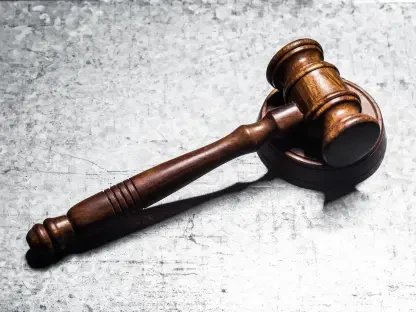Bankruptcy serves as a beacon of hope in the tumultuous ocean of financial distress, guiding debt-ridden individuals toward a haven of stability. Navigating the complexities of bankruptcy requires skillful oversight to sidestep legal intricacies and potential adverse fallout. This guide is crafted to simplify the intimidating journey through bankruptcy, explaining the various chapters available for filing and shedding light on both the immediate relief provided and the enduring effects on one’s fiscal health. It is essential to approach this route with prudence and informed counsel to successfully resurface from the undercurrents of debt into calmer financial waters. In taking this voyage, with the right preparation and support, individuals can sail out of the storm of insolvency and into a more peaceful economic future.The guide outlines key aspects like the immediate stay on debt collection and the eventual debt discharge, depending on the chapter filed. It also cautions about the long-term consequences, such as the impact on credit scores, which can affect future borrowing capabilities. The aim is to arm those considering bankruptcy with the knowledge to make an informed decision, understanding that while the journey can lead to a fresh start, it must be trodden with careful thought to the financial habits that led there. With the right approach, bankruptcy can be navigated successfully, providing a structured path to regain financial footing.
Understanding Bankruptcy and Its Purpose
Bankruptcy is not merely a legal proceeding; it is a financial rebirth, a tool designed to shelter individuals and businesses from the deluge of insurmountable debt. It’s a mechanism that embodies both compassion for those beset by financial misfortune and the sobering reality of economic shortfall, aiming to offer a breath of fresh air and a fresh start to those submerged under fiscal burdens. The foundation of bankruptcy lies in the noble principle that every person deserves a second chance, a runway to a new beginning unshackled from the chains of past financial blunders or misadventures. From individuals blindsided by medical emergencies to businesses capsized by economic downturns, bankruptcy strives to provide a structured and equitable remedy, balancing the scales between the debtor’s aspiration for relief and the creditor’s quest for compensation.
Types of Bankruptcy Filings
Navigating the sea of debt relief options begins with understanding the different vessels available – each chapter of bankruptcy law designed for specific financial predicaments. Chapter 7 bankruptcy is the lifeboat for those seeking to discharge unmanageable debts swiftly, though it may come at the cost of parting with non-exempt assets. It’s the beacon for the financially capsized who possess little more than they need for basic livelihood. Conversely, Chapter 11 serves as a sturdy ship for businesses caught in a maelstrom, providing them the means to reorganize and plot a course back to profitability while keeping their debts at bay. It’s a complex and costly passage, but one that can lead to renewed enterprise vigor. Chapter 13 represents a steady sail for individuals who, blessed with a consistent income, aspire to navigate their debts over the course of three to five years without relinquishing their valued possessions. These chapters, along with the specialized routes of Chapters 9, 12, and 15 – catering to municipalities, farmers, and cross-border insolvencies respectively – offer a flotilla of options tailored to diverse financial crises.
The Bankruptcy Process and Its Players
The journey through bankruptcy is a legal odyssey requiring fortitude and guidance. Filing the initial petition is akin to setting sail, with the court docket as the compass. A trustee is appointed as the helmsman, overseeing the smooth passage through the turbulent waters of asset evaluation and creditor negotiations. The cornerstone of this journey is the meeting of creditors, where debtors must navigate inquiries under the watchful eyes of both the trustee and creditors themselves. This stage opens the potential floodgates to objections and litigation, as creditors, left at the watery edge of insolvency, may challenge the dischargeability of debts. Understanding this matrix of legal navigational aids and hazards is paramount; one misstep can lead to the wreckage of one’s bankruptcy claim and the subsequent sinking of hopes for financial renewal.
The Impact of Bankruptcy on Credit and Assets
Rebounding from bankruptcy is akin to weathering a storm; the struggle does not conclude upon reaching calm waters. The aftermath lingers, reflected in a damaged credit report and the possibility of losing possessions. Chapter 7 bankruptcy offers a fresh start, yet it can come at a cost, demanding the liquidation of assets and leaving individuals financially unburdened but potentially stripped of their belongings. Conversely, Chapter 13 bankruptcy offers a lifeline for retaining assets, mapping out an extended road toward fiscal stability and potentially leaving less of a mark on one’s credit history. Regardless of the path chosen, the impact of bankruptcy remains evident. Both forms cast a long shadow that can last up to a decade on one’s credit history – a reminder of the treacherous but sometimes necessary voyage toward debt relief. This stark reality underscores the complexity of bankruptcy, a guiding light away from insolvency that, nevertheless, records its passage on the credit landscape for years to come.
Alternatives to Bankruptcy
Before one commits to the irreversible course of bankruptcy, there exist uncharted straits and channels that might present less turbulent alternatives. Debt negotiation offers the possibility to parley with creditors for more favorable terms, while mortgage modification can anchor a home against the tide of foreclosure. Debt relief programs may provide a raft to keep afloat without braving the open seas of the court system. Contemplating these options is crucial, for they can often present a less drastic impact upon one’s fiscal map than the mark left by bankruptcy. Each alternative carries its own currents and undercurrents which must be carefully navigated to avoid foundering on unseen shoals.
Preparing for Bankruptcy: Steps and Legal Guidance
Embarking on bankruptcy is a significant step that requires thorough planning. One must gather a detailed inventory of their financial situation, including all debts, assets, and sources of income. Engaging a qualified bankruptcy attorney is critical in navigating the complexities of the bankruptcy code. Their experience can be the key to a successful outcome, avoiding the pitfalls that can complicate the process.While bankruptcy can provide a fresh start, it’s a path fraught with long-lasting consequences. It’s a journey that should not be taken lightly, as it impacts one’s financial future long after the initial proceedings have concluded. Armed with the right information and expert guidance, individuals facing financial hardship can chart a course toward recovery. However, it’s imperative to recognize the gravity of this decision and proceed with careful consideration and professional advice.
The Long-term Consequences and Recovery after Bankruptcy
After facing bankruptcy, one must chart a course towards financial recovery, likened to the slow yet steady reconstruction of a ship. The journey to rebuild credit is not swift; it’s achieved step by step, encompassing various methods such as acquiring secured credit cards and adhering to strict budgeting. Each action taken is a deliberate move toward restoring one’s fiscal health.The aftermath of bankruptcy provides an opportunity for a new beginning, with the horizon offering paths that lead away from past financial turmoil. However, the essential factor on this path to renewal is the unwavering commitment to sound financial management. By applying the hard-learned lessons from bankruptcy, one can steer clear of previous mishaps and sail toward a stable financial future.It’s through persistent effort and smart financial practices that individuals can eventually reestablish their standing and credibility. As they do so, they leave the turbulent waters of debt behind, setting sail toward a horizon that promises better control over their economic situations and a pledge not to repeat past errors. With careful navigation, the shadow of bankruptcy recedes, giving way to the light of regained trust and hope for stability.









